A long day lies ahead of us. Therefore, we start early. On the board that our guide Andreas paints beautifully for us every morning, we read: "No rain, no pain." This gives us courage. We leave the Valle de Yerri in the direction of Pamplona, (Iruña in Basque), the capital of the Navarre region.
On the one hand, Pamplona is known for the Way of St. James. On the other hand, Pamplona also stands for the automotive industry. Volkswagen fans know that the VW T-Cross, a Mini SUV, has been built here since 2019. However, since we are more into VW buses, we are more interested in tradition and history today. We find them in the old town Casco Antiguo.
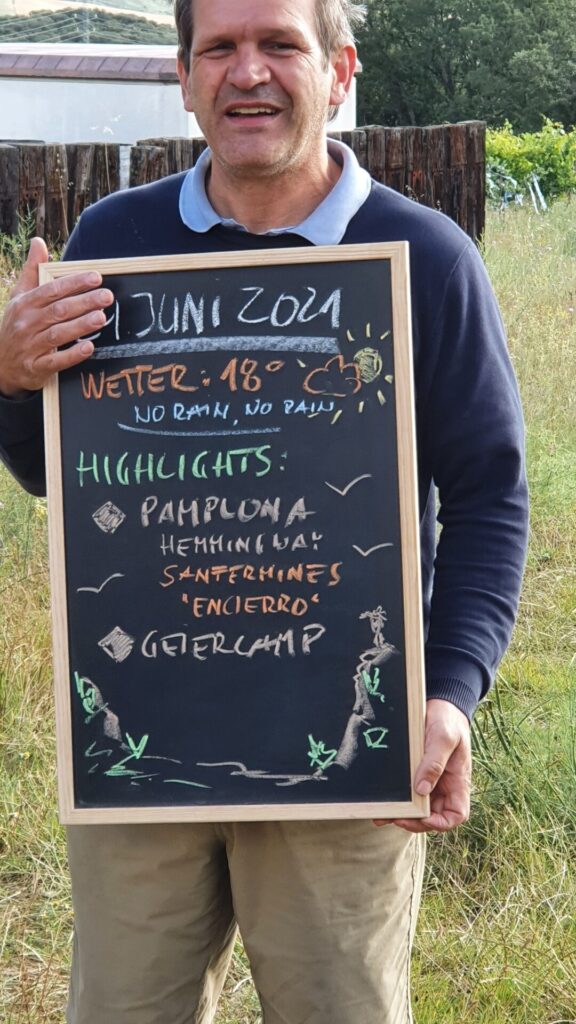
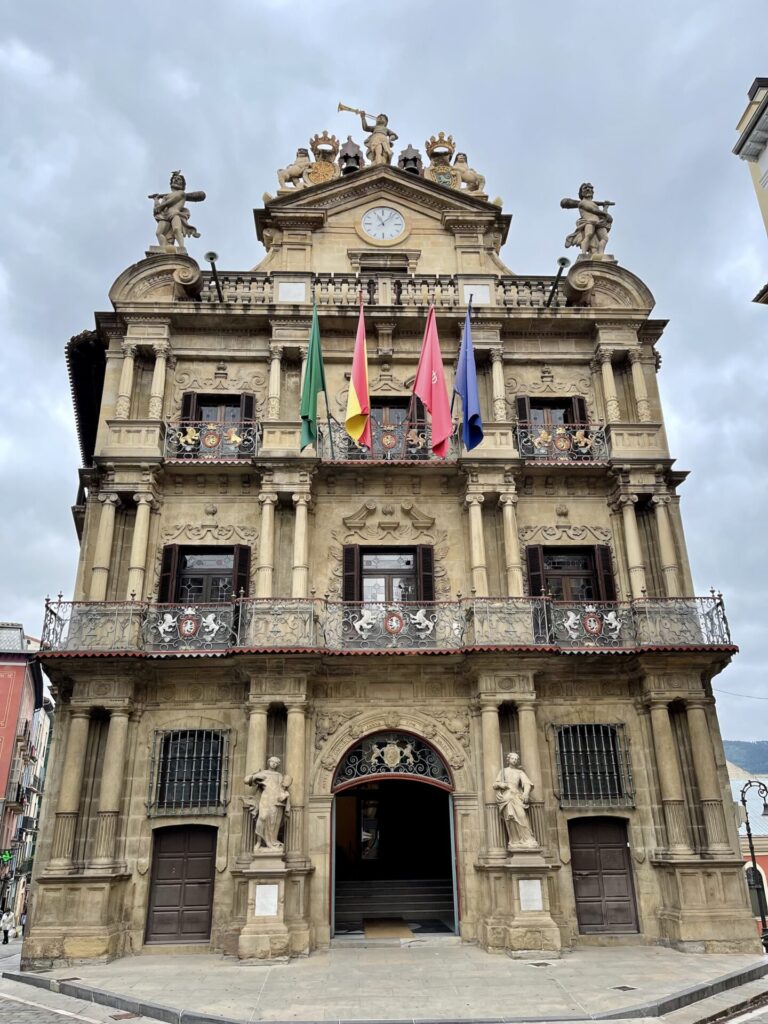
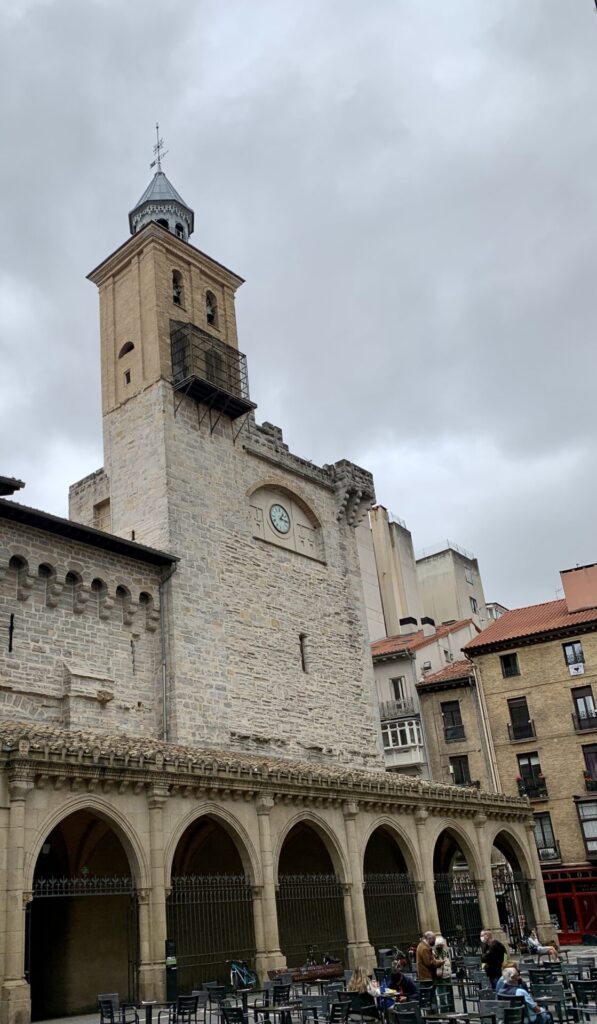
Parking
We park for small money on the large parking lot Rochapea directly on the river Arga. From here we stroll on foot up the hill towards the old town. Alternatively, there is an elevator.
If you still need a parking space close to the center for Motorhomes with good facilities, you will find it in Calle Biurdana.
Sanfermines
On the way we already see the first signs for the Sanfermines. The Sanfermines is the most famous attraction of Pamplona and takes place every year from July 6-14. This bull run is traditional and yet controversial. The bulls are driven from their temporary stalls through the narrow streets of the old town to the arena. A spectacle in which men - Spaniards and tourists, on the one hand drive the bulls, on the other run away from them to avoid being injured.
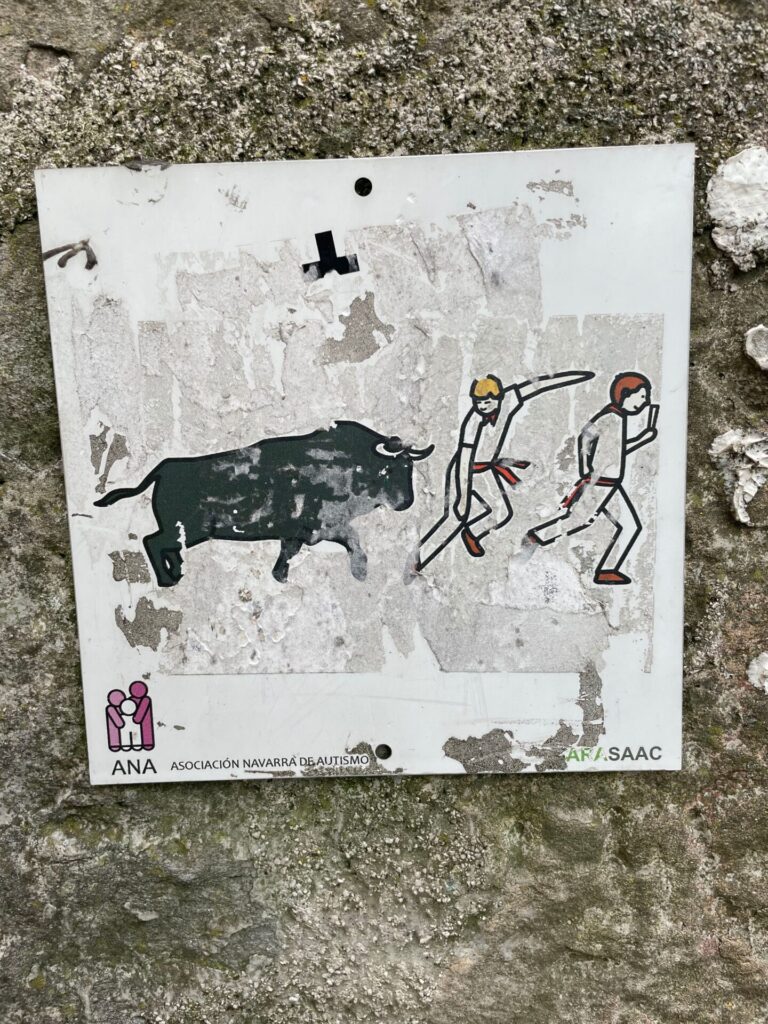
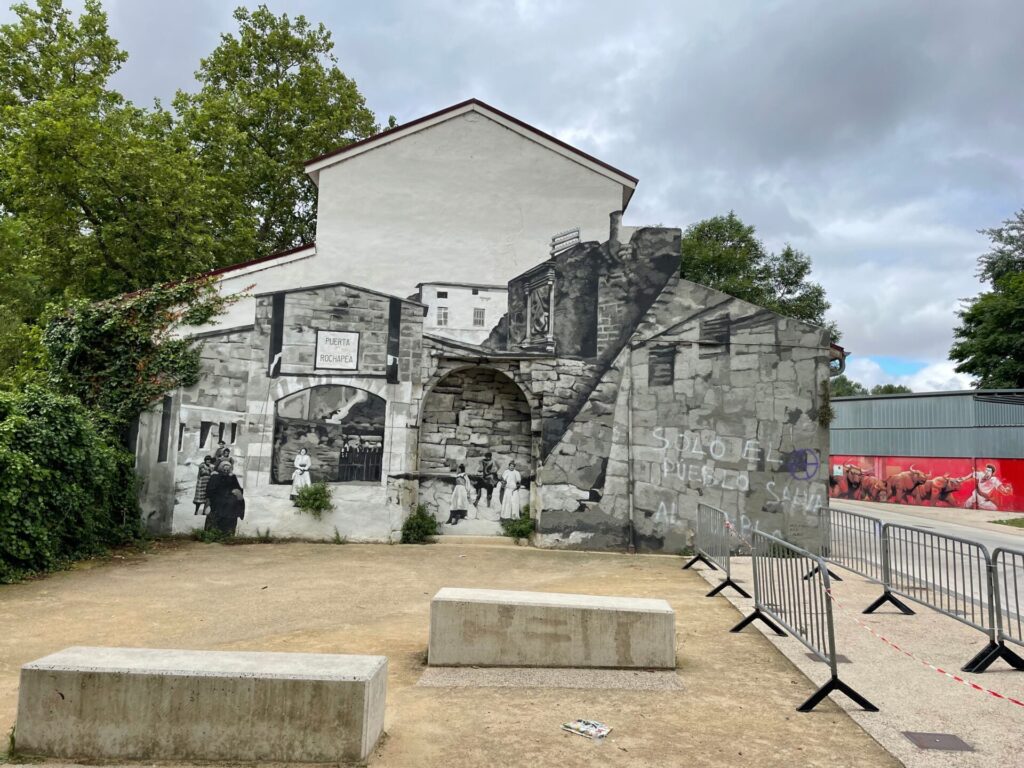
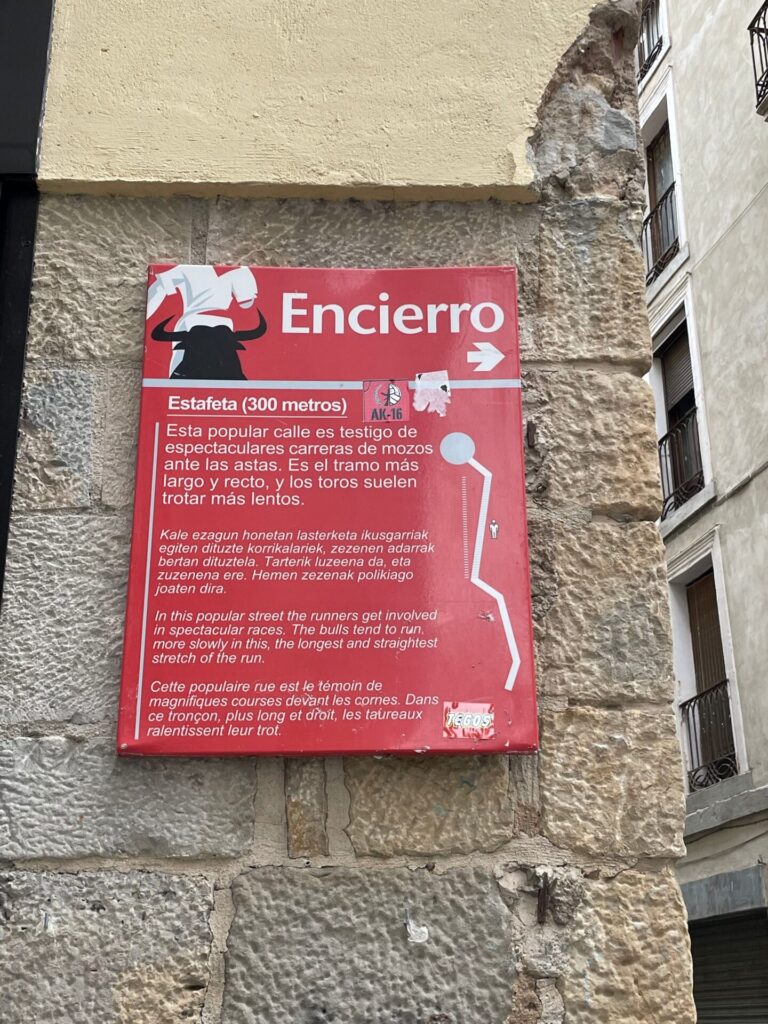
Pamplona old town
We prefer to take a tour of the city. Pamplona is strongly associated with Ernest Hemingway. The latter had heard of the Sanfermines when he lived in Paris, and then visited it every year. Hemingway wrote about his time in Pamplona in his novel Fiesta, which made him famous in 1926. Thus, Pamplona helped Hemingway make his breakthrough, and through him became famous himself.
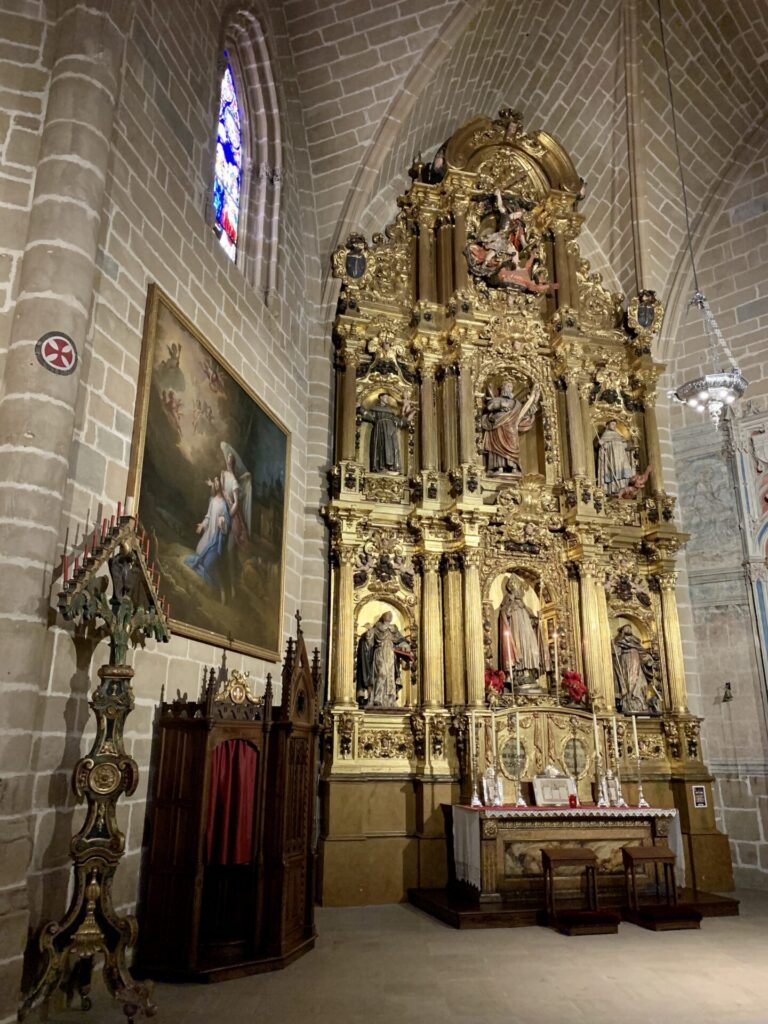
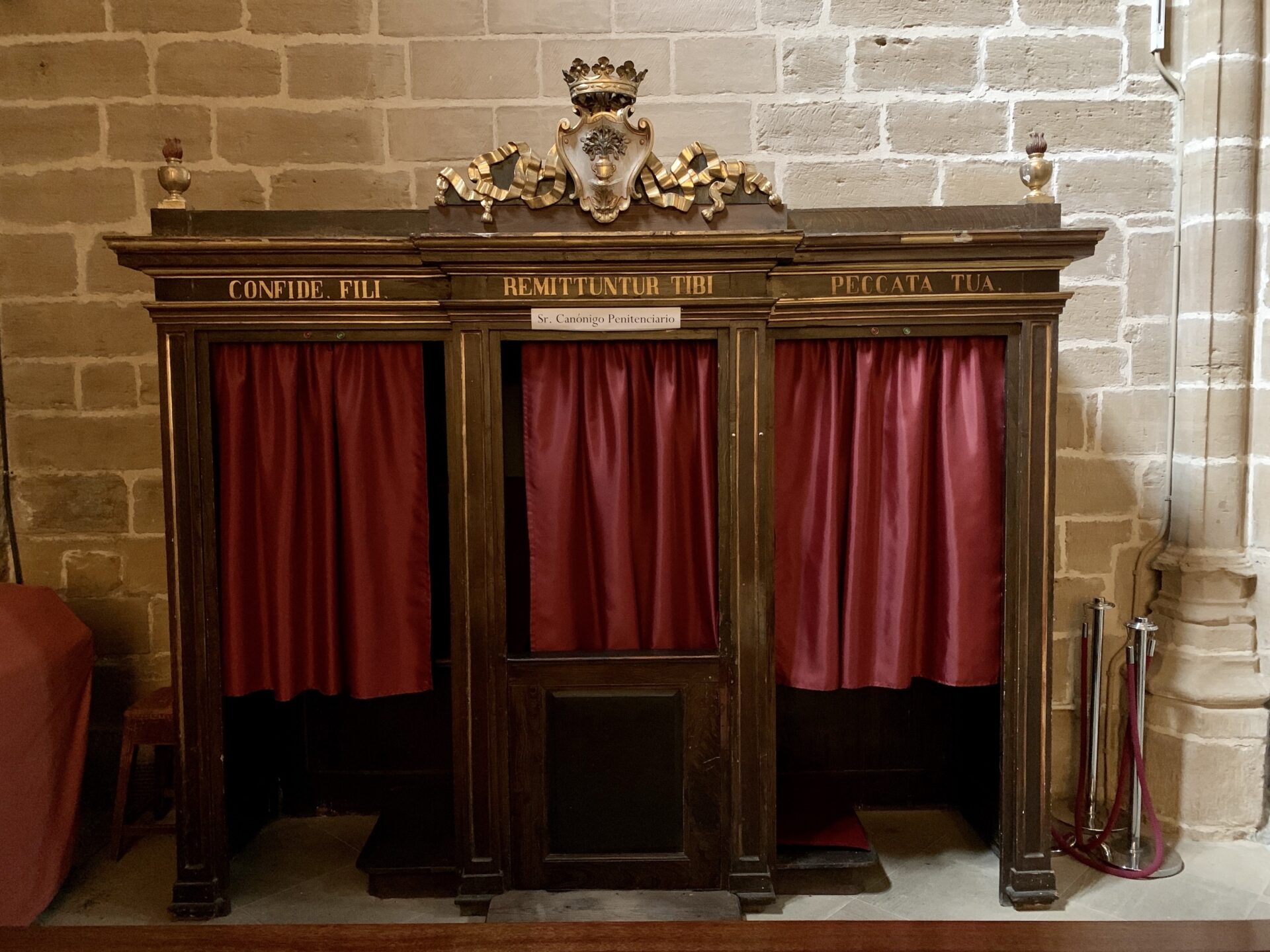
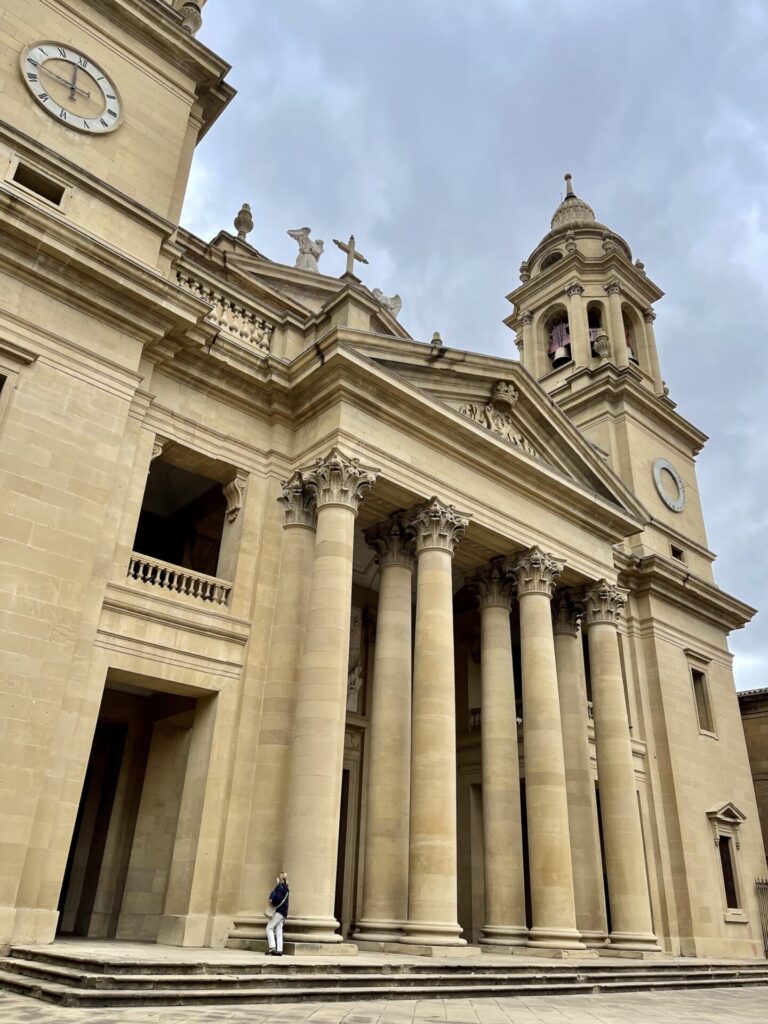
Since our tour plan provides "time at leisure" we use this: We let ourselves drift through the narrow streets and pay a visit to the imposing cathedral.
Pamplona Cathedral, dating from the 15th century, stands out for its richly decorated Neoclassical facade and Gothic interior architecture. It is definitely worth a visit. We were very impressed by it.

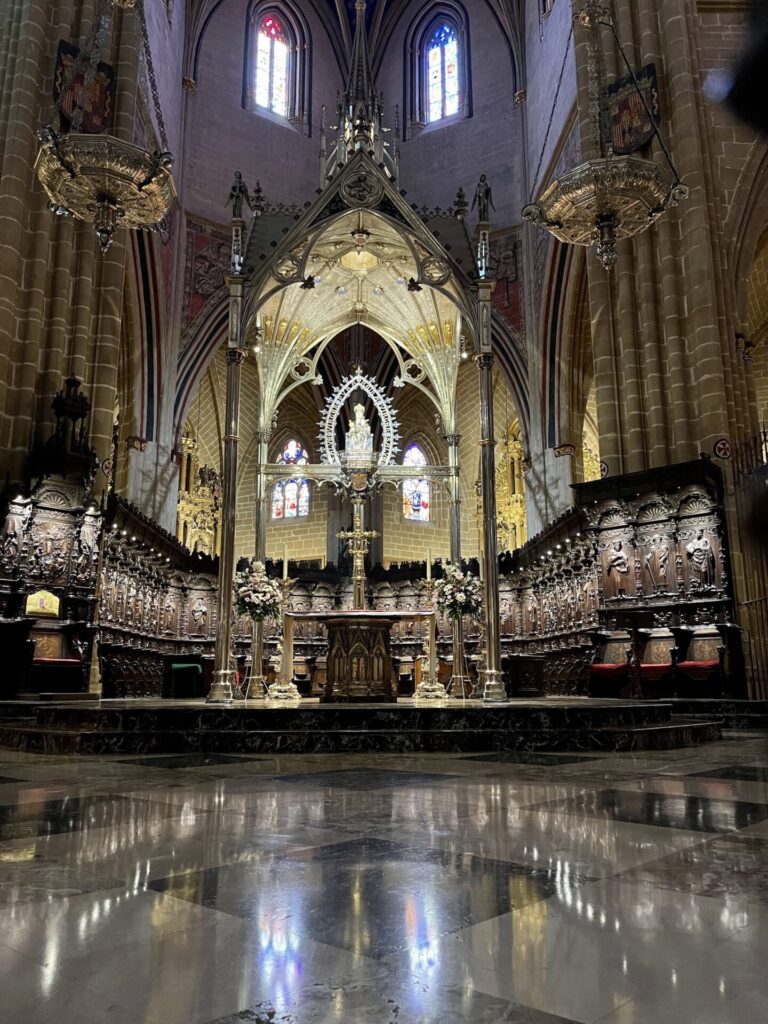
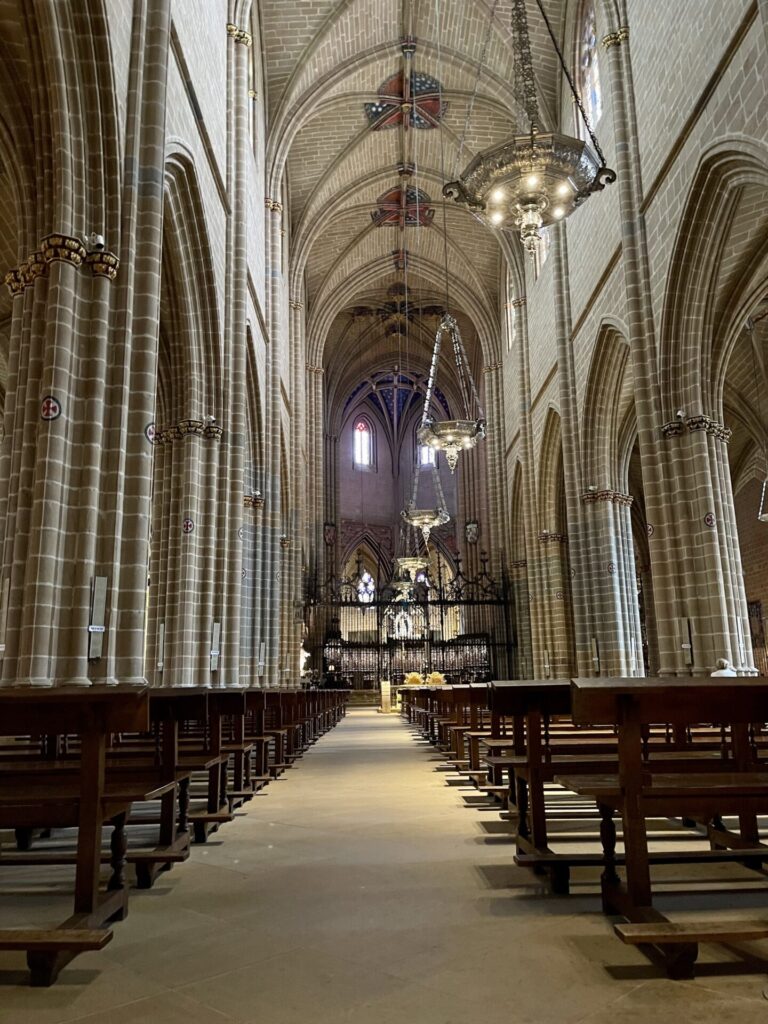
The bullring from 1920, is nice. But we have seen nicer ones. The one in Ronda impressed us, this one is nice as I said.
Only a few steps further is the Plaza Consistorial with the baroque town hall Casa Consistorial. Here is also a tourist information, but we do not need it today.
We continue to the Plaza del Castillo. The lively main square of the old town served until the end of the 19th century, among other things, as a bullring. Surrounded by many cafes and bars, cultural events take place here in the summer.
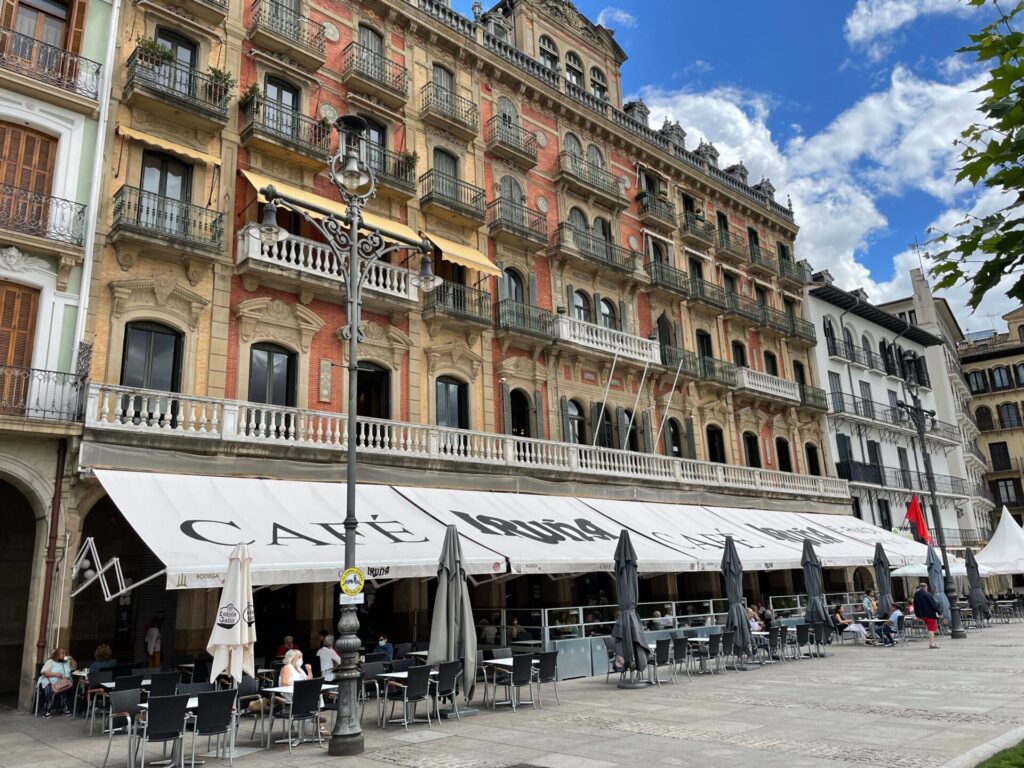
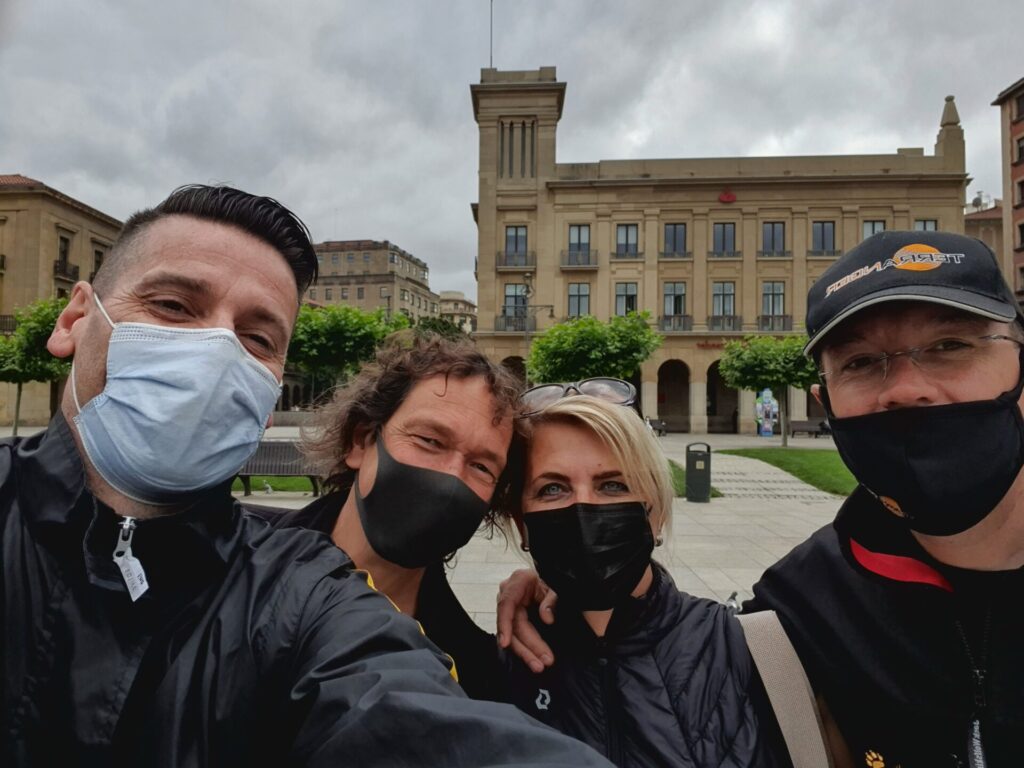
Hemingway's favorite places
Around the square are the bars known by Hemingway Cafe Iruña, Tropicana Cerveceria, Bar Txoko and Windsor Tavern.
Ernest Hemingway used to go in and out of the Art Nouveau Café Iruña in the Plaza del Castillo. A traditionally stylish place and popular meeting place. Hemingway often stayed across the street at the Grand Hotel. Cafe Iruña was founded as early as 1888. According to the chronicle, it was the first place with electric light.
We're having some pinchos here. Pinchos or pintxos is the Basque version of the small appetizers called tapas in the rest of Spain. Pinchos are usually more elaborate than simple tapas and are named after the skewer that holds the individual pieces together on bread or tortilla.
Hemingway liked to drink his red wine in the Tropicana Cervecería in the Hotel Quintana. The bar still exists today, but unfortunately the hotel no longer does.
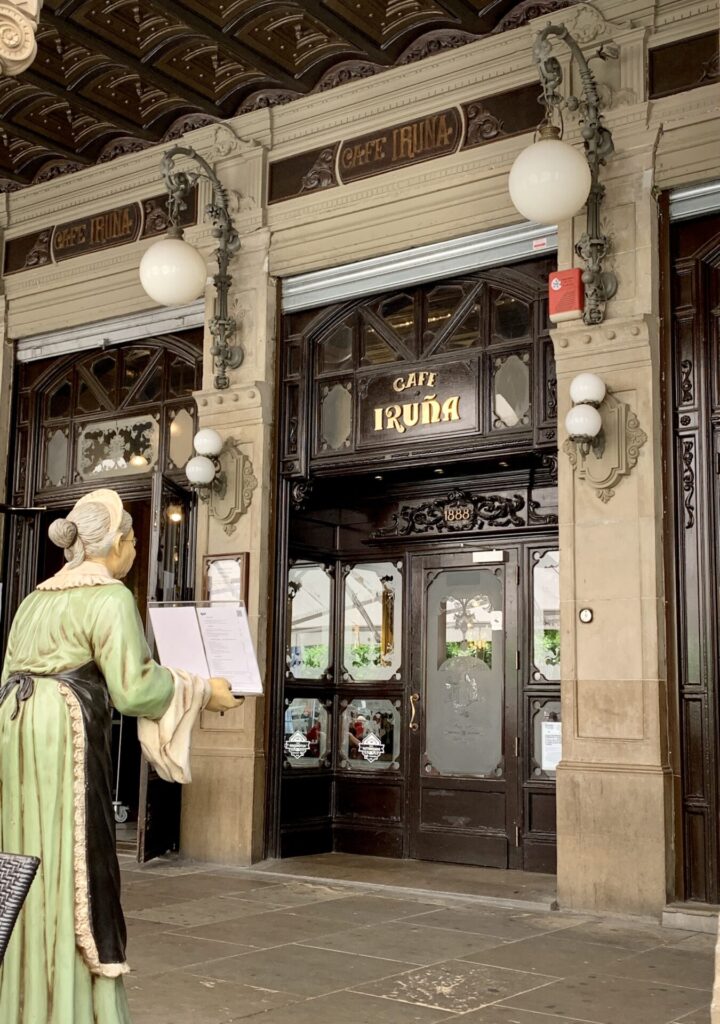
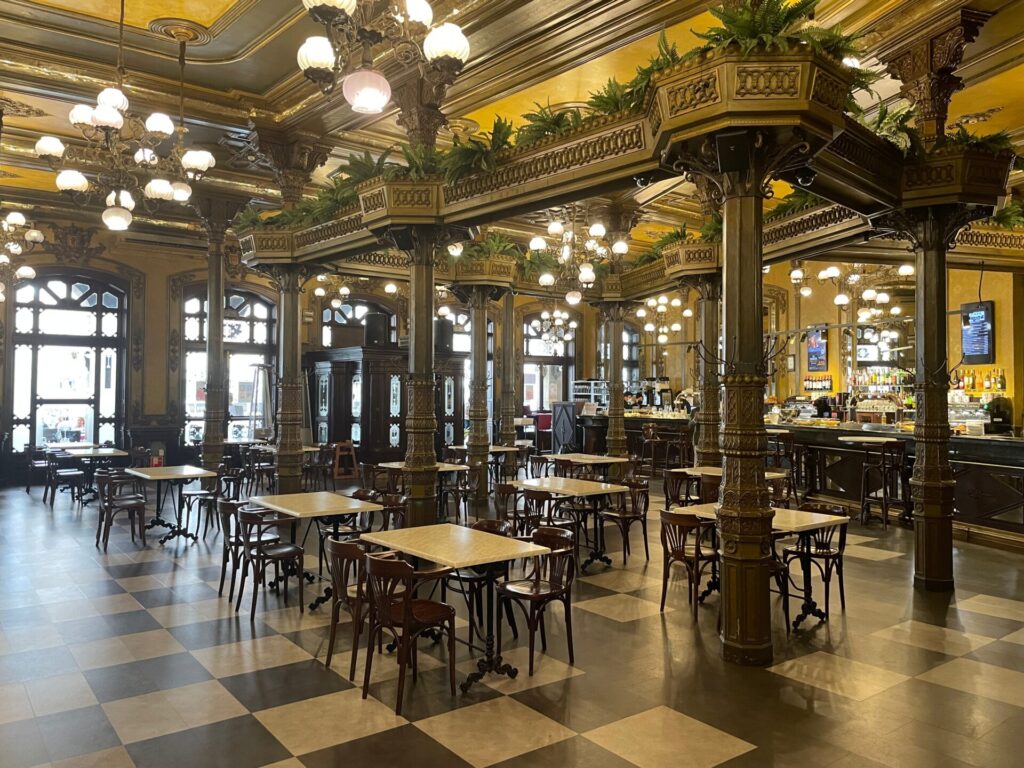
Later, from 1927, 'La Perla' became Hemingway's favorite hotel. From his room 127 he could see the bull running on Calle Estafeta. In Hemingway's honor, the room has been left unchanged to this day.
Bar Txoko opened in 1930 as Bar Choko and was one of Hemingway's favorite places in Pamplona. Especially during his last visit during the Sanfermines in 1959, he often visited here. The bar is considered a meeting place for bullfighting enthusiasts. Although Hemingway famously enjoyed red wine, he often came to the Txoko after bullfights and ordered a vanilla milkshake with cognac. The Txoko is located next to the former Hotel Quintana, where Hemingway also stayed from time to time.
Windsor Tavern, used to be called Bar Torino. In Hemingway's novel 'Fiesta' the bar is called Milano and is the scene of a quarrel.
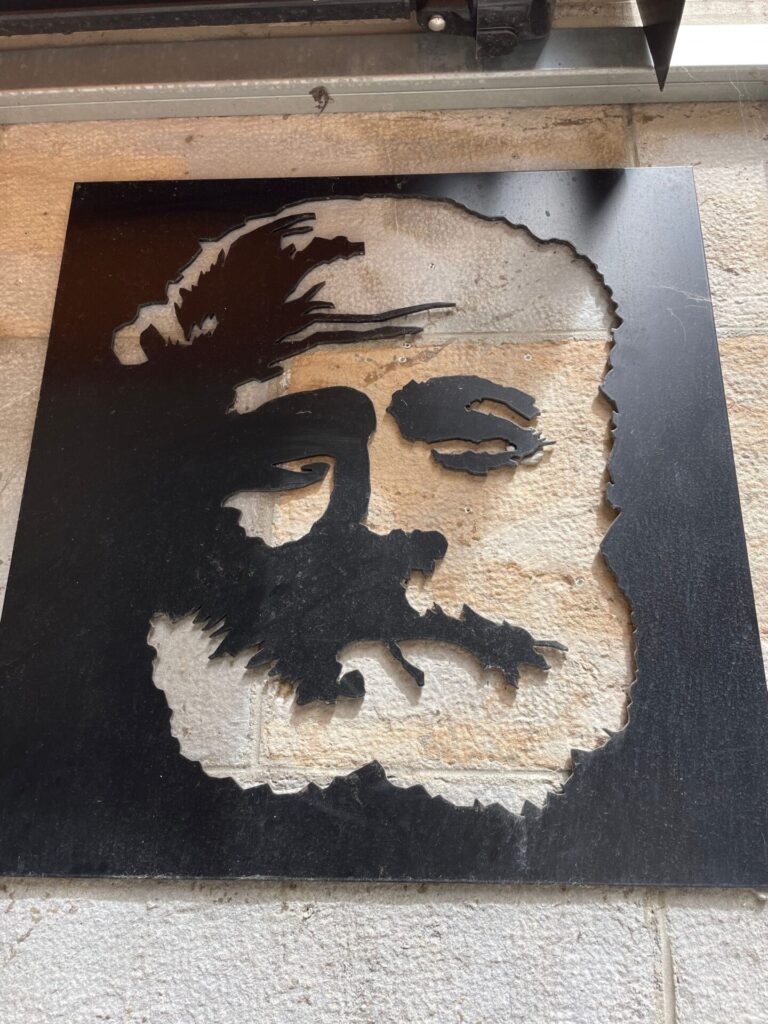
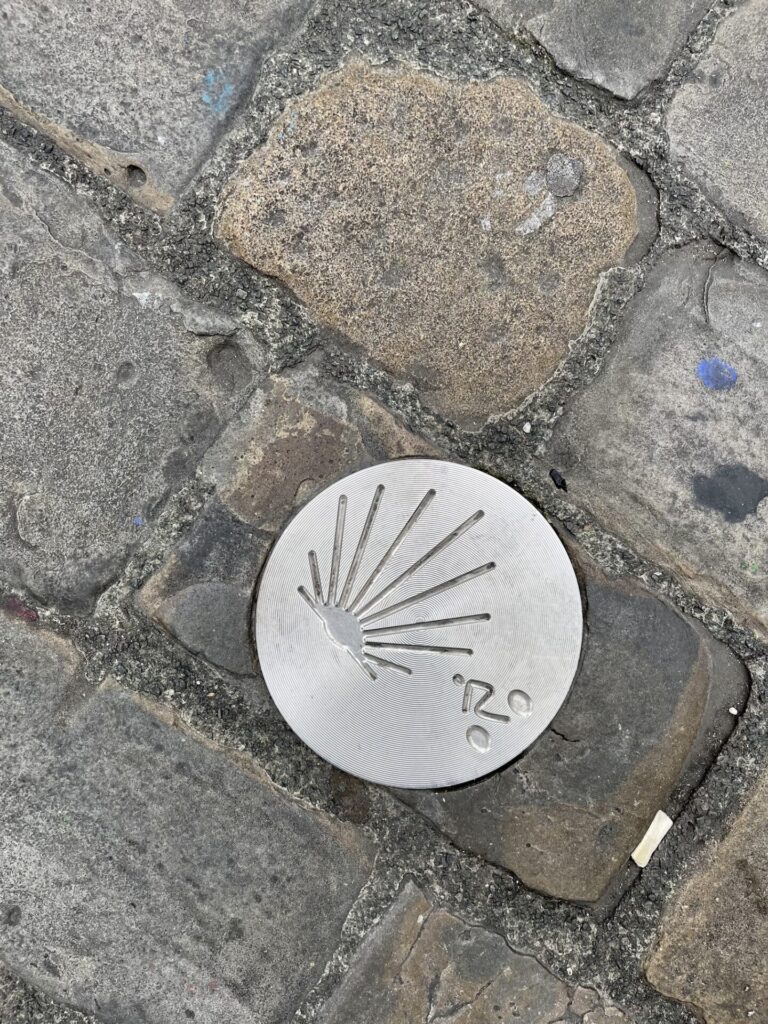
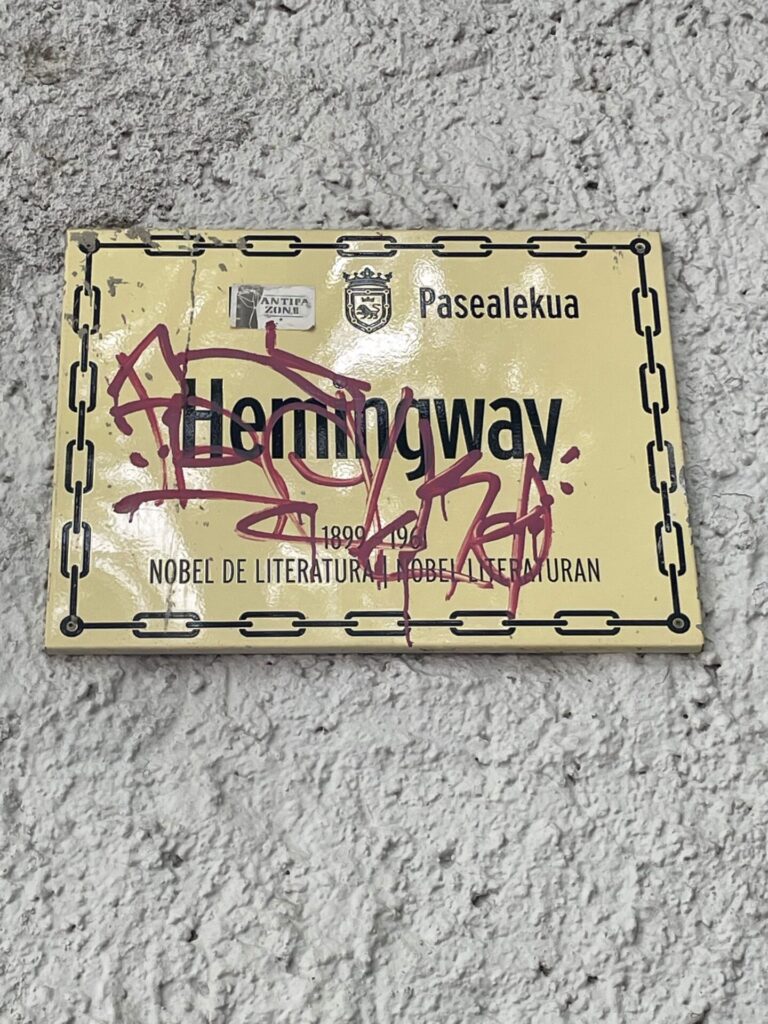
The fact is, Hemingway had taste. Whenever I landed in the world in a cafe or a bar that can claim that Hemingway stayed there more often, the location had charm. This is as true here as it is a few meters away. In the premises of the Iruña, time seems to have stood still. A classic just.
Around the square there is an unmanageable maze of alleys and small streets. We get lost a little, which is certainly part of it.
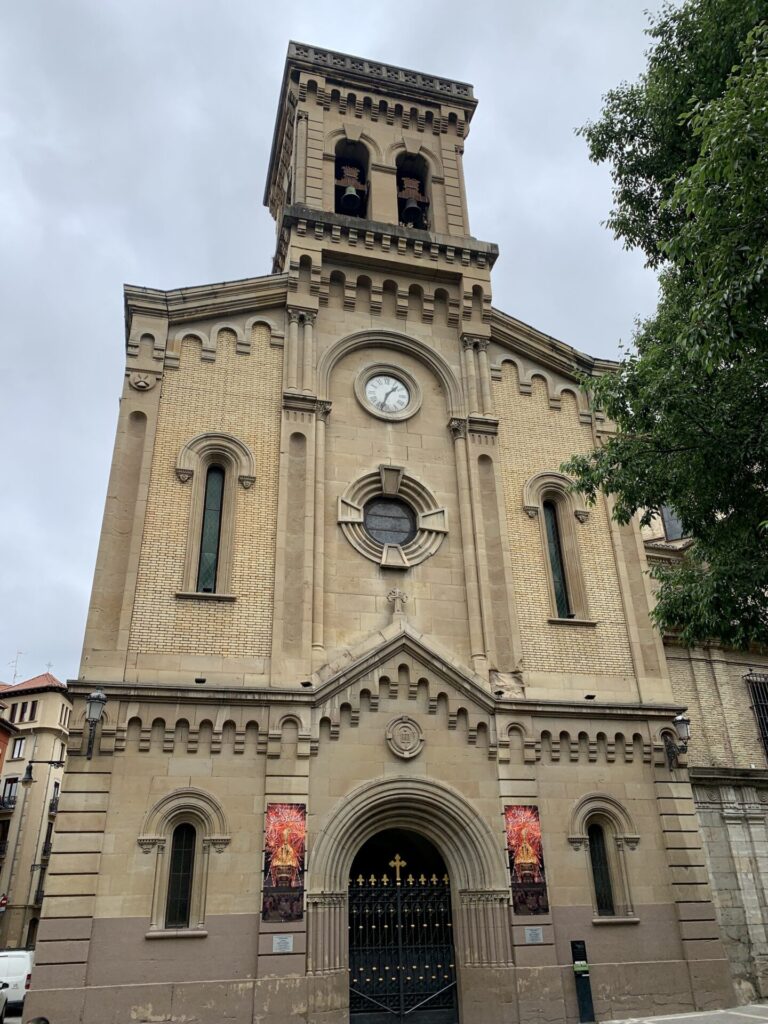
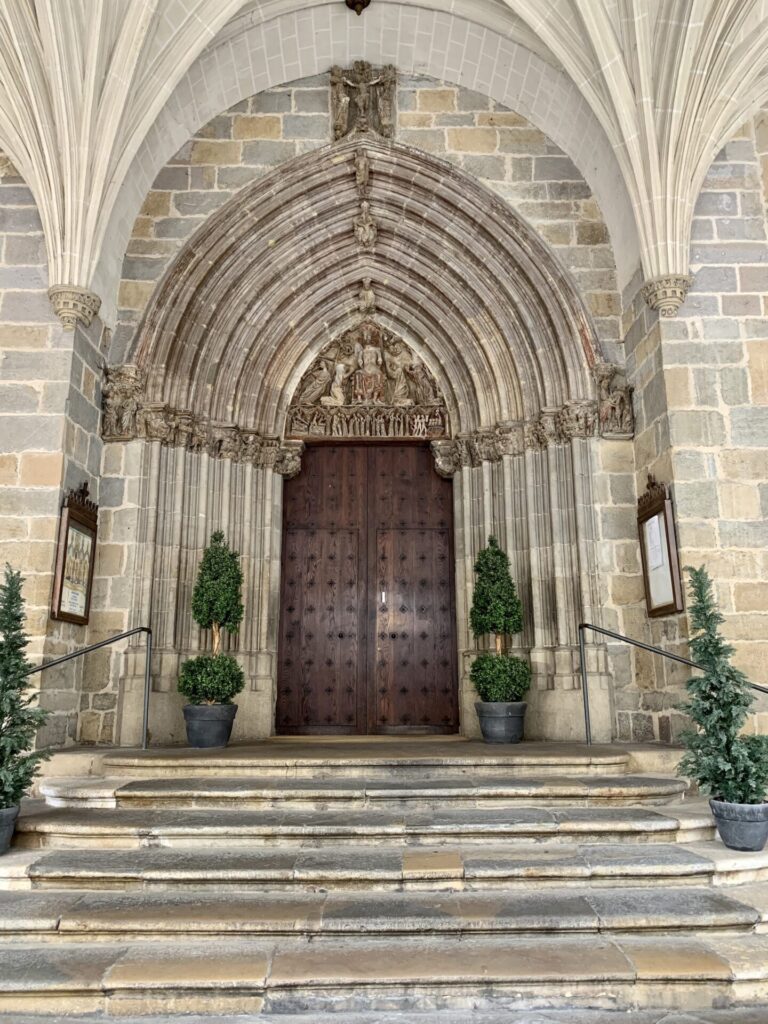
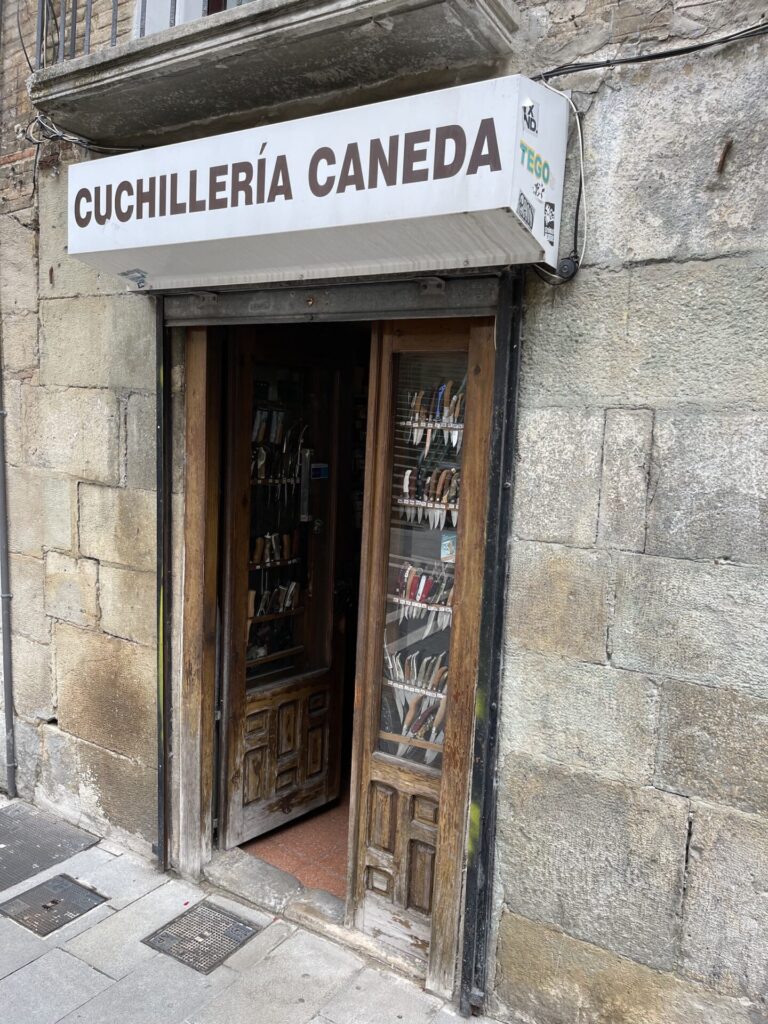
Before we stroll through the pedestrian zone Calle Mayor through the old town, we visit the beautiful Iglesia de San Lorenzo. We can hardly pass a church without briefly going inside. At the end of Calle Mayor, the oldest church in Pamplona, Iglesia de San Saturnino, awaits us. Which one do you like better?
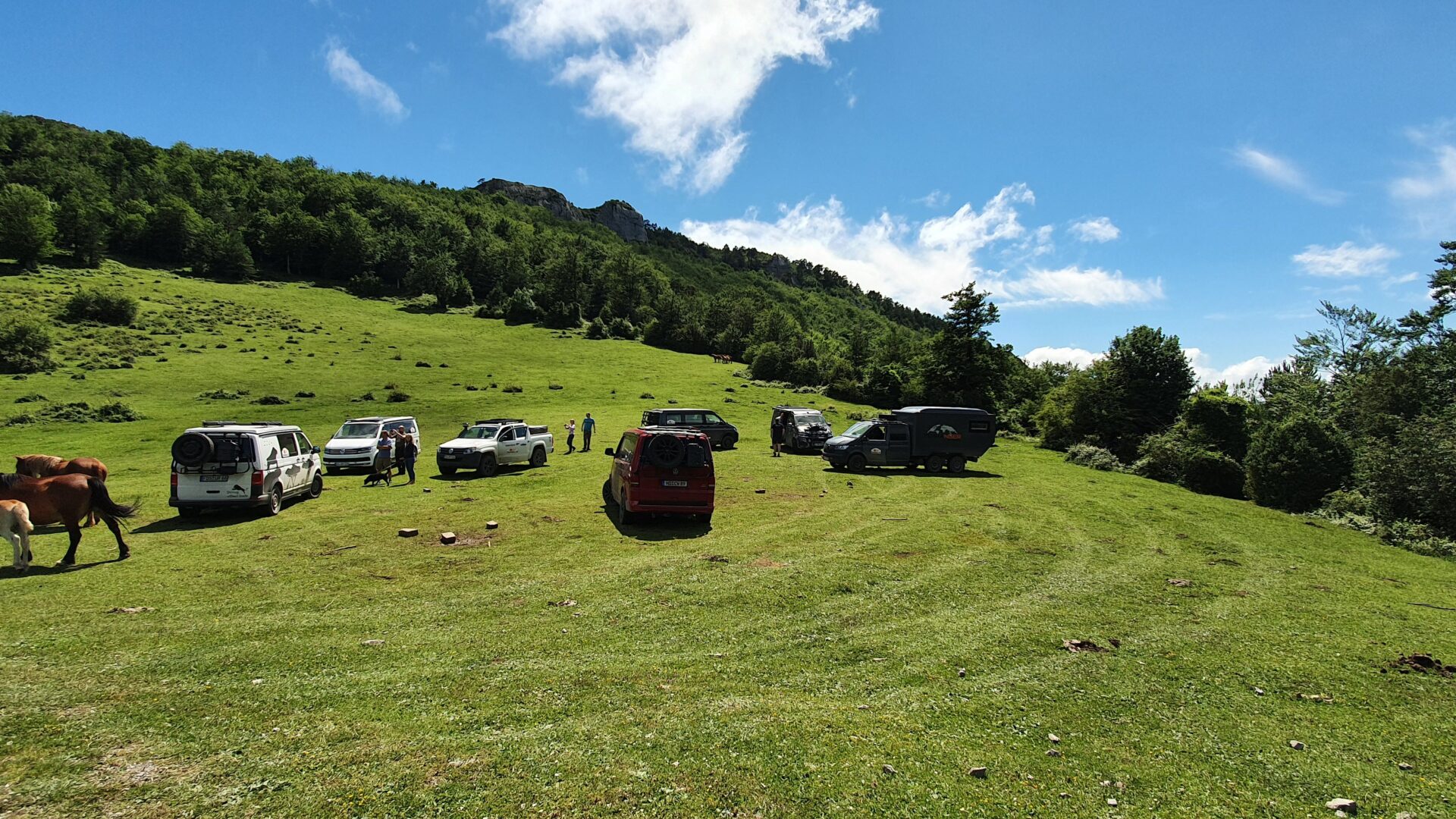
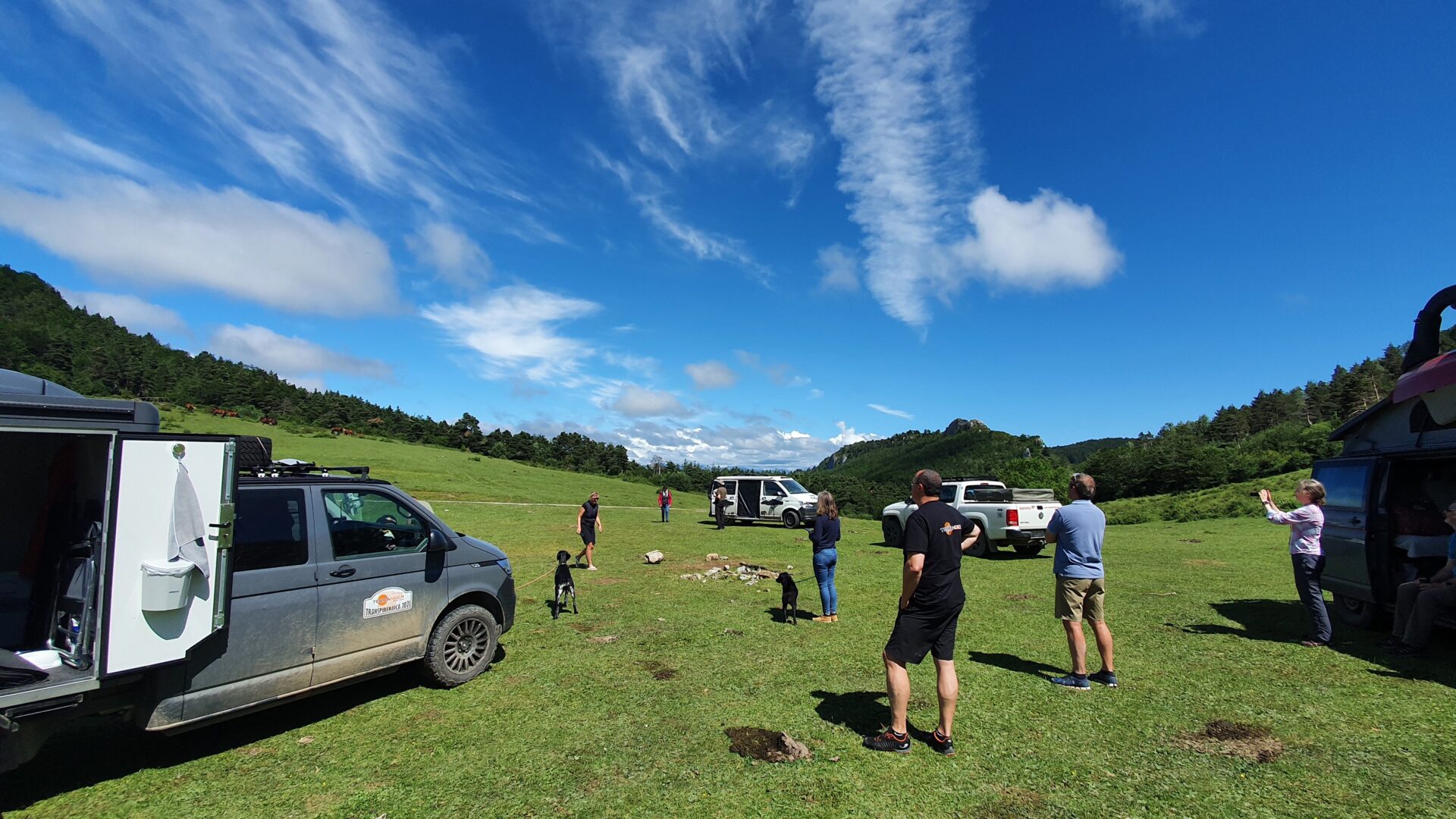
Wild horses in vulture camp
We don't want to rest any longer and use the afternoon to continue our journey. It goes back again into the foothills of the Pyrenees. Our way leads over dusty gravel roads through a forested grassy landscape to the Embalsa (i.e. a reservoir) de Usoz.
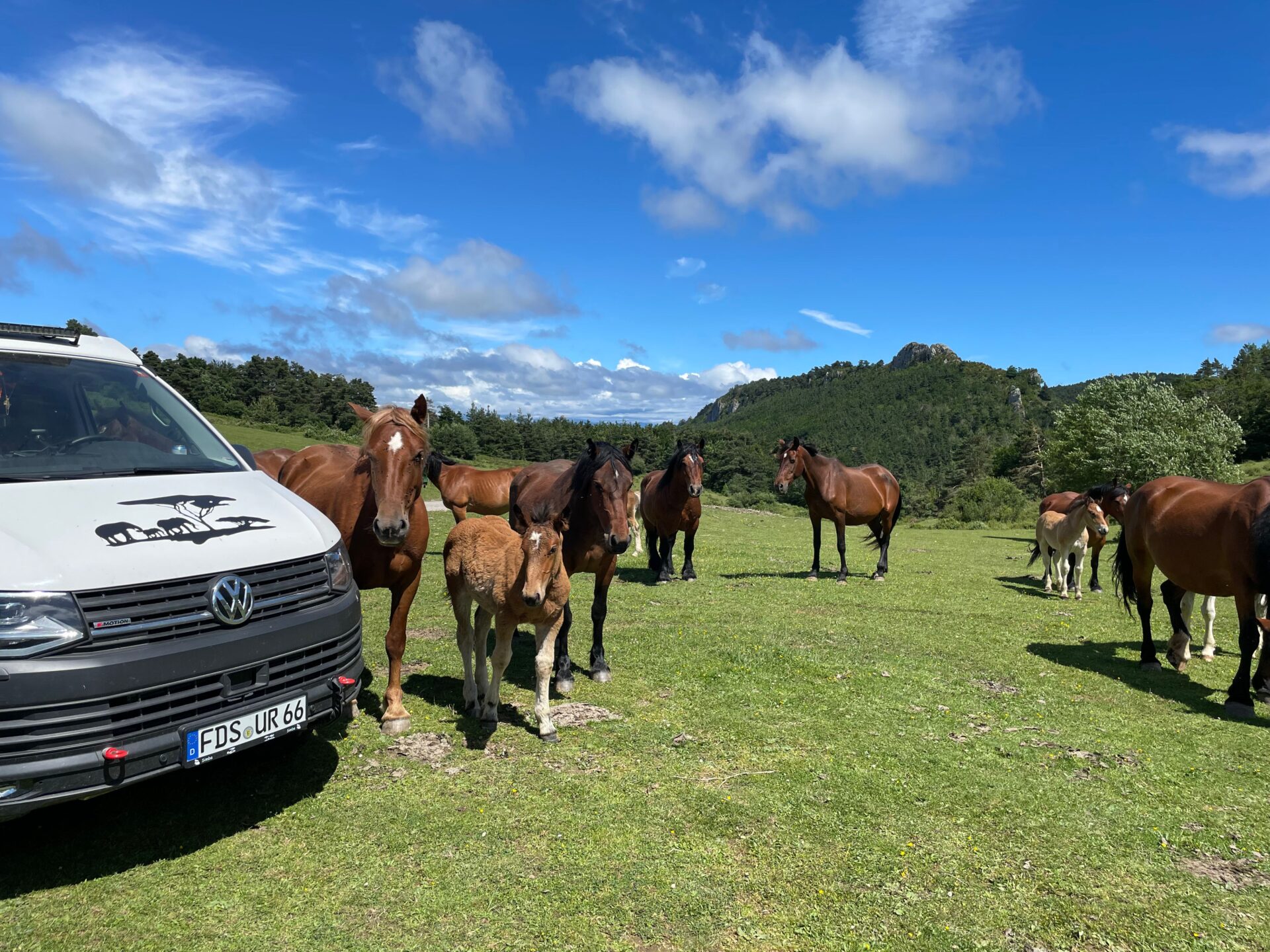
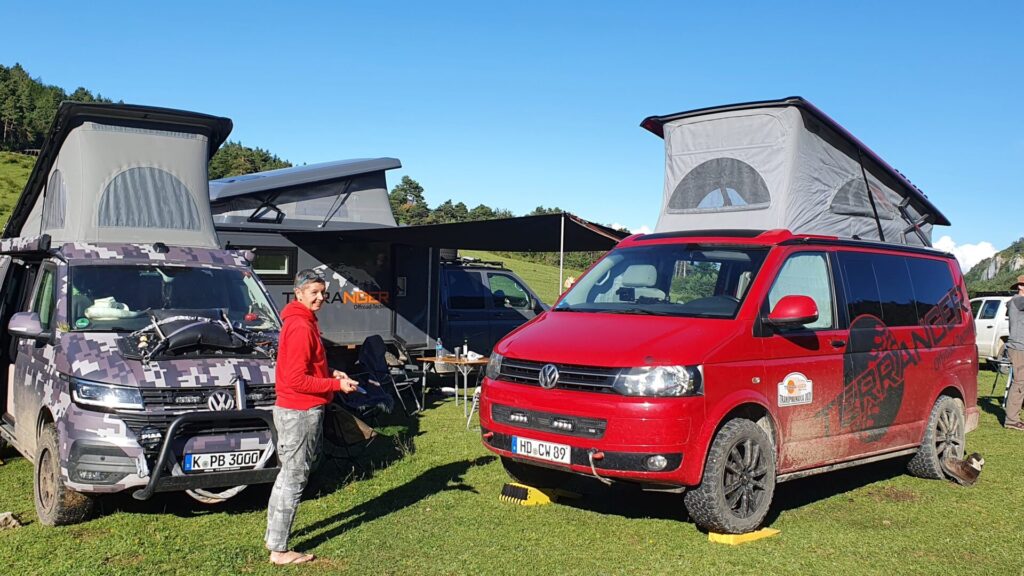
The destination is the vulture camp. There a surprise awaits us: We don't see many vultures, but a herd of wild horses is standing on exactly the meadow where we want to set up our camp. We simply put our vehicles in between and it is nice to see how little we disturb the horses. They run around completely without shyness between us.
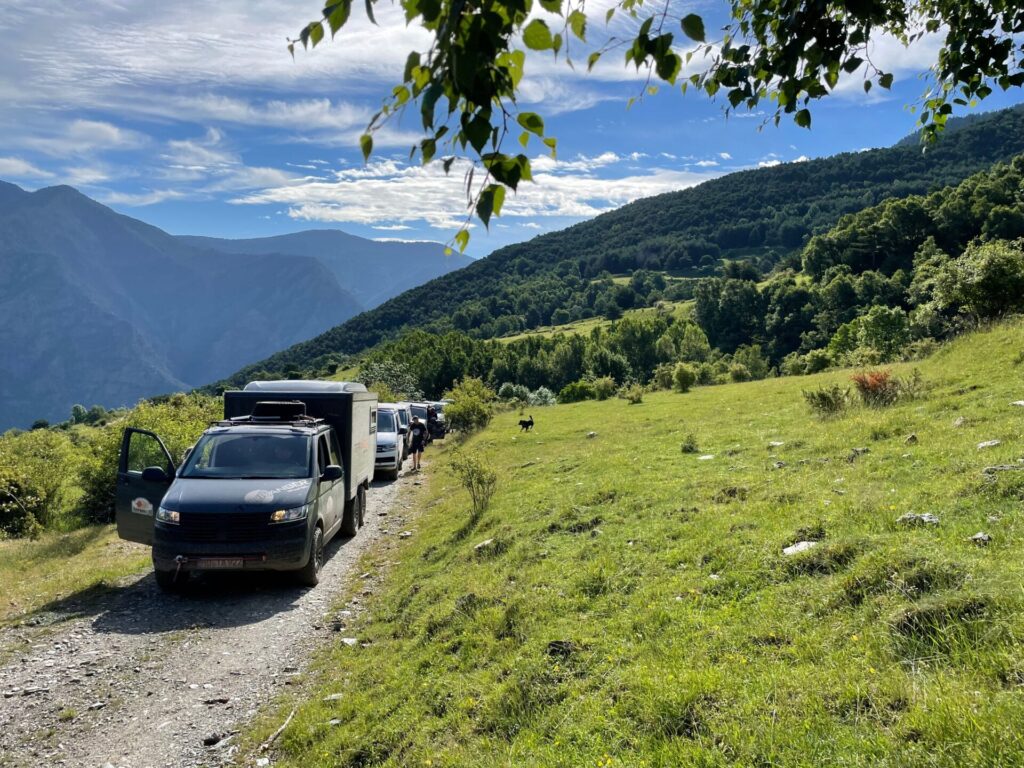
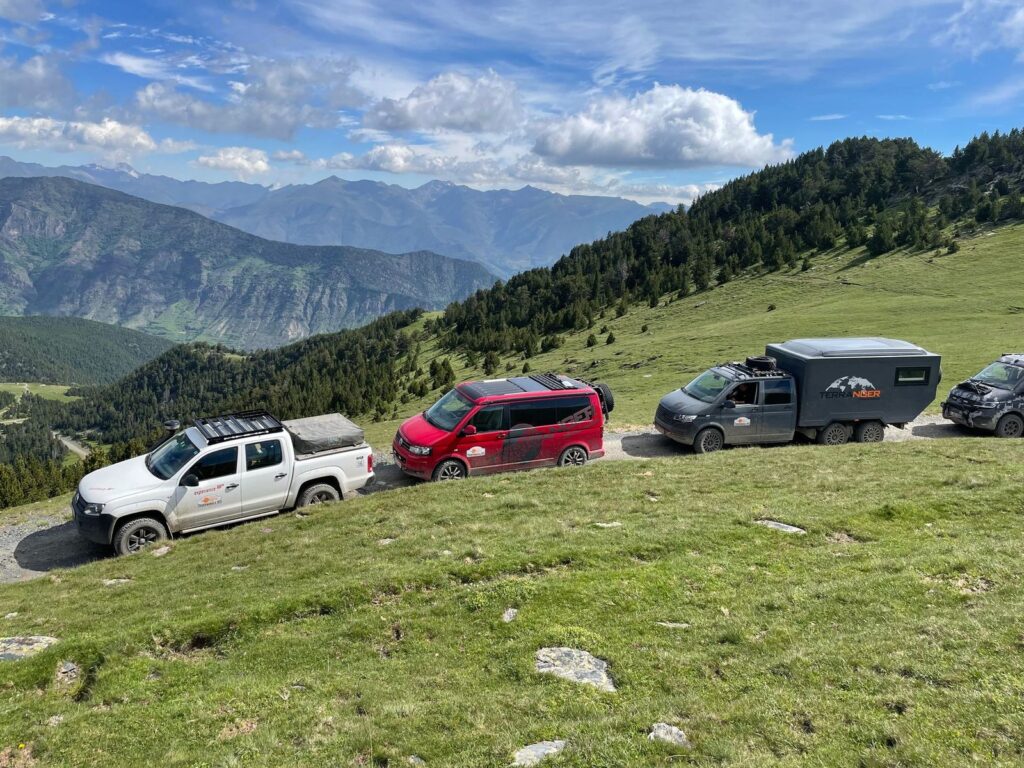
After the hustle and bustle of Pamplona, it feels good to be out in the open again.

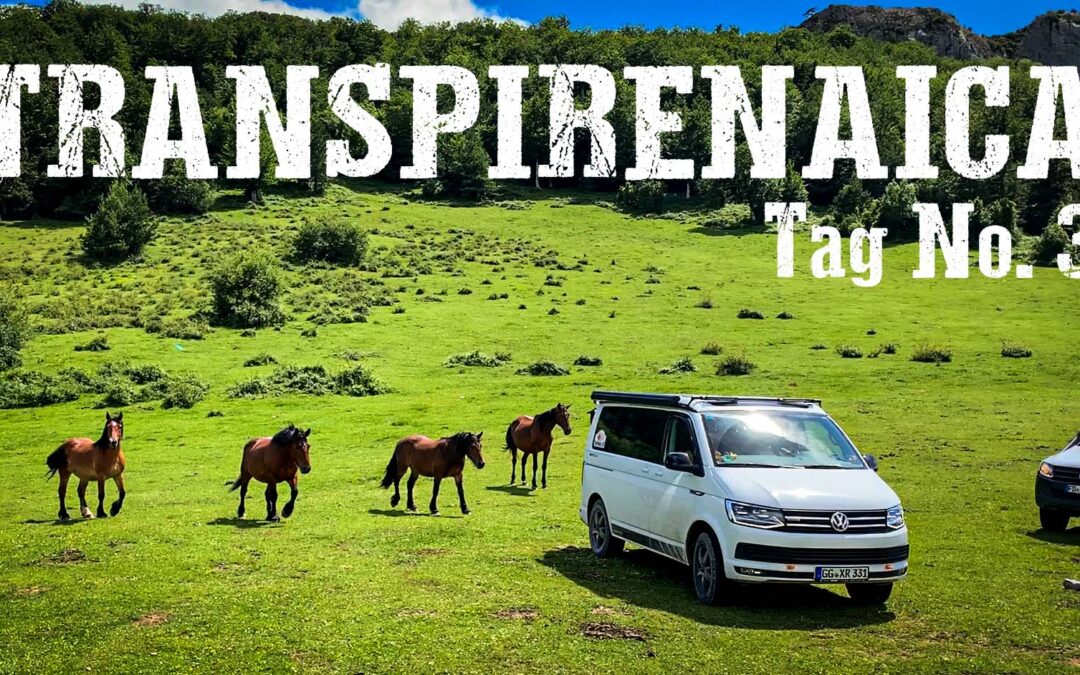
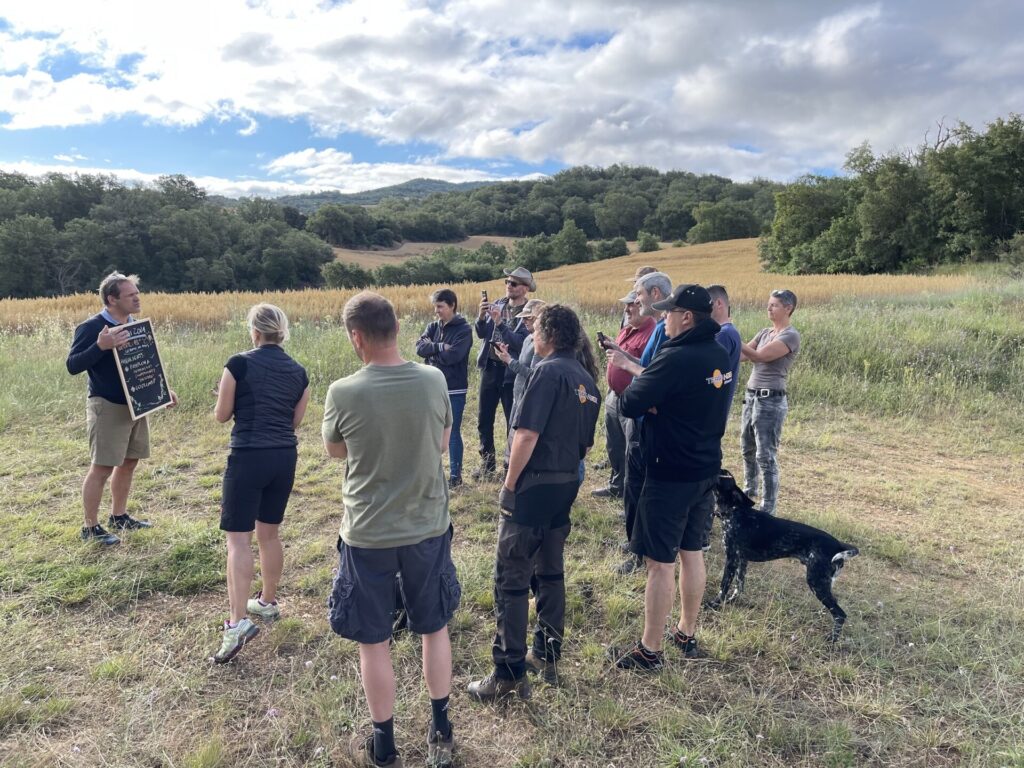
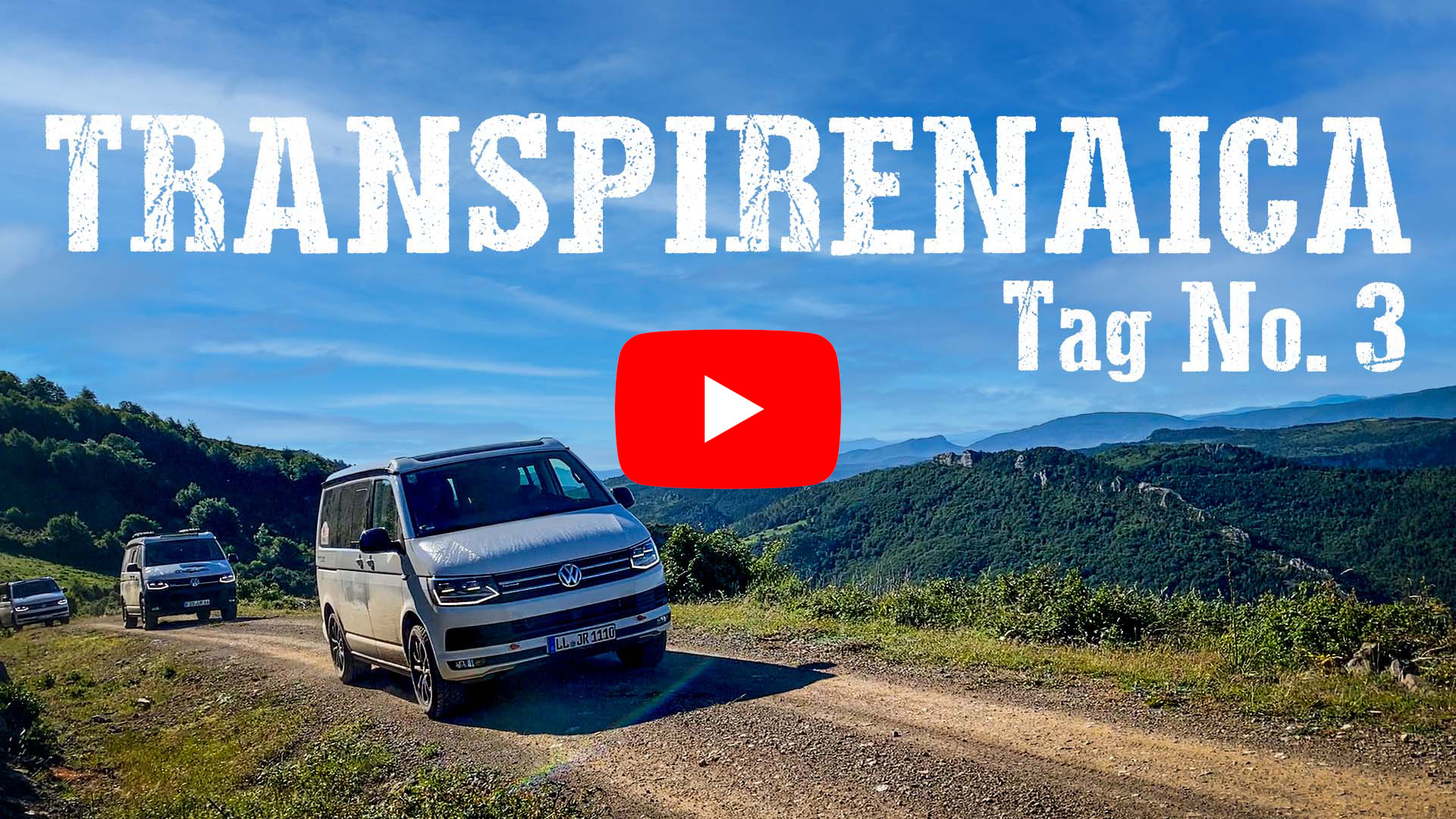
Recent Comments